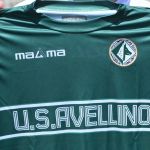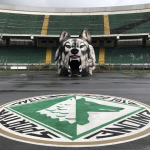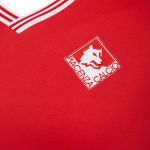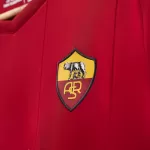
Teams crest with wolves
An animal suspended between instinct and reason, and representing the dynamics of the game of football
April 21st, 2023
Animals have always had enormous iconographic and symbolic value in the world of football. There are many teams where one or another species of animal regularly peeps out of the club logo. Often they embody the principles and values of the club they belong to, but more often they pay homage to the city they refer to. Among the most famous animals of Italian teams, but not only, is certainly the wolf. With its symbolism hovering between instinct and reason, it perfectly represents the dynamics that govern the game of football.
The wolf and the she-wolf of Roma
The most famous Italian team to use a wolf as a symbol in its logo is, of course,AS Roma. The club was founded on 7 June 1927 and the first Scudetto was that of the she-wolf suckling twins, a historical icon of the Eternal City. In the late 1970s, when a controversy arose between the club and the city council, which did not approve the use of the she-wolf with twins as the city's emblem, designer Piero Gratton decided to create a stylised wolf for the Capitoline team's logo. The first version, enclosed in two yellowand red circles, was black with red eyes, but over the years it took on different colours: from white to yellow to a red that tended towards orange. In 1997, AS Roma won the battle against the city council and the wolf and the twins were thus able to return to the coat of arms of the Roman team.
The Wolf of Avellino
The wolf is also closely linked to the history of Avellino, first that of the town and later that of the team. The inhabitants of Irpinia owe this name to the word 'Hirpus', which means wolf in the Oscan language, which has always been present in the fauna of the Campania region. The green and white club has therefore been associated with the animal since the beginning of its history, and it has appeared in various forms in the club's logo over the years. One of the most famous crests is the one designed by architect Quirino Sgrosso in 1977. Here the wolf's head is inserted in profile into a half-white, half-green rhombus inscribed in a circle with the words 'Unione', 'Sportiva', 'Avellino' and 'S.P.A. 1912' in the four cardinal points.
Lecce between team and city
As far as Lecce is concerned, the symbol of the wolf primarily represents the city and is also flanked by the holm oak, a tree characteristic of Salento. 'lupiae' was also the name of Lecce in Roman times. The canid, walking under the characteristic holm oak, then also became the symbol in the coat of arms of the Giallorossi and has always been seen on the jerseys of the Apulian club throughout history.
The wolves of Cosenza and Piacenza
Since the beginning of football history, Cosenza's red and blue logo has proudly displayed the image of the wolf of Sila, the vast plateau of the Calabrian Apennines. The animal's face is usually drawn in profile and the main feature is its fierce stance with its mouth wide open.
In the history of Piacenza, however, the wolf was not on the club's coat of arms from the beginning. In the early years, the club logo was a white cube on a red background, then it became a red and white chequered ball, the club colours, with a large yellow 'P' in the middle. In the 1980s, the presidency passed to the entrepreneur Leonardo Garilli and from that moment on, the white she-wolf on a red background peeked out of the Piacenza coat of arms; a clear allusion to the Capitoline she-wolf, which is also on the coat of arms of the Emilian city.
Wolverhampton, England's most famous wolves
Wolverhampton, the wolves of England, as can easily be deduced from their nickname, have the wolf as a social animal and also as a symbol of their city. It has featured in the club's logo since 1970 and has taken many forms over the years. From the first wolf jumping on two Ws to no less than three wolves jumping in unison. Then, in 1979, the stylised black head on an yellow background appeared and has not disappeared from the Wolverhampton logo since.
Only once has the wolf been removed from the team's logo. It was on 3 March 2020. To mark World Wildlife Day, a day proclaimed by WWF to raise awareness of wildlife conservation around the world, Wolves decided to remove their iconic animal from the club crest for one day.































